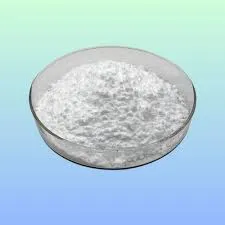
Nov . 24, 2024 11:36 Back to list
Exploring the Properties and Applications of RDP Powder in Various Industries
Understanding RDP Powder Applications and Advantages
RDP powder, or redispersible polymer powder, has emerged as a critical material in various industries, particularly in construction and manufacturing. This versatile material is a white, free-flowing powder obtained from the drying process of polymer dispersions. RDP powder is renowned for its exceptional properties that enhance the performance of construction materials like mortars, adhesives, and renders. In this article, we will explore the composition, applications, benefits, and future prospects of RDP powder.
Composition and Characteristics
RDP powder is primarily composed of vinyl acetate-ethylene (VAE) copolymers, which are known for their excellent adhesion, flexibility, and resistance to water. These polymers are created through a process called emulsion polymerization, resulting in a stable and high-performance product once redispersed in water. When mixed with water, RDP powder forms a viscous, cohesive paste that significantly improves the workability and bonding strength of construction materials. Its fine particle size allows for easy incorporation into various formulations, making it an ideal choice for many applications.
Applications in the Construction Industry
One of the most significant applications of RDP powder is in dry mix mortars. When added to formulations for tile adhesives, plaster, and render, RDP enhances the flexibility and adhesion of the final product, ensuring longevity and performance even in challenging conditions. These improved properties are vital for applications in areas exposed to moisture, such as bathrooms and kitchens, where traditional materials might fail due to water damage.
Additionally, RDP powder is utilized in the production of self-leveling compounds, waterproofing systems, and polymer-modified cementitious materials. The incorporation of RDP powder allows these products to exhibit superior crack resistance, impact strength, and reduced shrinkage, which are essential for maintaining the integrity of structures over time.
rdp powder

Benefits of RDP Powder
The use of RDP powder provides numerous advantages in construction applications. Firstly, it significantly enhances the adhesion properties of mortars and adhesives, promoting better bonding between surfaces, thus reducing the likelihood of failures. Secondly, it improves the workability of formulations, making them easier to mix and apply, which ultimately leads to better outcomes for contractors and builders.
Moreover, RDP powder offers improved flexibility and elasticity in final materials, allowing them to accommodate movement and stress without cracking. This property is particularly important in regions with fluctuating temperatures or seismic activity. Another key benefit is the product's resistance to moisture, which helps alleviate problems such as efflorescence and peeling in finished surfaces.
Future Prospects
As construction techniques evolve and environmental regulations become increasingly stringent, the demand for sustainable and high-performance materials is rising. RDP powder aligns with this trend, being eco-friendly and reducing the carbon footprint of construction projects. Future innovations may focus on enhancing the properties of RDP powder further, perhaps through the incorporation of fibers or other additives to promote even more robust performance characteristics.
In conclusion, RDP powder is a vital component in the modern construction industry, offering enhanced performance, versatility, and sustainability. Its ability to improve adhesion, flexibility, and water resistance makes it an invaluable tool for builders and manufacturers. As research and development continue to advance, the future of RDP powder looks promising, paving the way for more efficient and durable building materials that meet the needs of a dynamic construction landscape.
-
Versatile Hpmc Uses in Different Industries
NewsJun.19,2025
-
Redispersible Powder's Role in Enhancing Durability of Construction Products
NewsJun.19,2025
-
Hydroxyethyl Cellulose Applications Driving Green Industrial Processes
NewsJun.19,2025
-
Exploring Different Redispersible Polymer Powder
NewsJun.19,2025
-
Choosing the Right Mortar Bonding Agent
NewsJun.19,2025
-
Applications and Significance of China Hpmc in Modern Industries
NewsJun.19,2025







